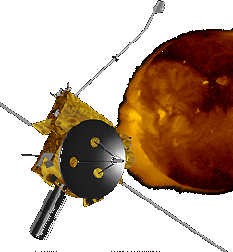The Ulysses spacecraft studies the Sun.
NASA
How Scientists Study Space Weather
Scientists combine various techniques to study space weather. Earth-based
and orbiting telescopes constantly observe the Sun in many different wavelengths.
Both satellites and ground-based instruments contribute readings of space
weather features such as particle densities, magnetic field strengths, and
radiation intensities. Scientists develop complex mathematical
models based on the laws of physics to predict behaviors of space
weather systems. Space physicists have also developed metrics, such as sunspot counts, to quantitatively describe variations in space weather.
Because of the complexity of space weather systems, scientists often use models to try to understand and predict the systems. Some models describe the Sun,
others interplanetary space, and still others cover the Earth's magnetosphere or its upper atmosphere. Sophisticated computer software crunches the numbers
generated by these models so scientists can compare their predictions with
observed events.
We have only been making direct observations of the Sun and space weather phenomena using telescopes, satellites, and other sophisticated instruments for a relatively short period of time. The Sun, however, has been around for several billion years. Scientist use various "proxy" techniques to estimate levels of solar and space weather activity in prehistoric times and in more recent eras prior to the space age.
You might also be interested in:

The force of magnetism causes material to point along the direction the magnetic force points. As shown in the diagram to the left, the force of magnetism is illustrated by lines, which represent the force.
...more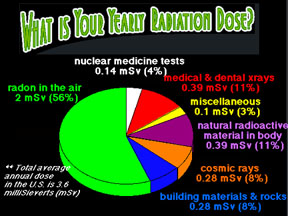
Radiation comes in two basic types: electromagnetic radiation transmitted by photons, and particle radiation consisting of electrons, protons, alpha particles, and so forth. Electromagnetic radiation,
...more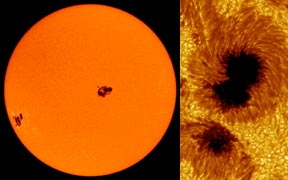
Sunspots are dark, planet-sized regions that appear on the "surface" of the Sun. Sunspots are "dark" because they are colder than the areas around them. A large sunspot might have a temperature of about
...more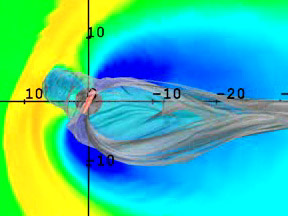
Space weather is a very complex scientific field. Scientists who study space weather use computer models a lot. Space weather is a bit like weather on Earth in this way because weather forecasters on our
...more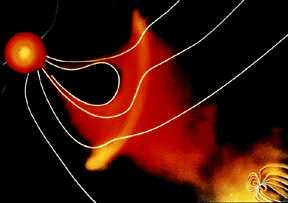
There is a giant magnetic "bubble" in space around the Sun. That "bubble" is called the heliosphere. In a sense, we Earthlings live within the outer atmosphere of our Sun. The solar
...more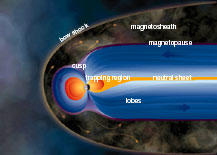
The Earth has a magnetic field with north and south poles. The Earth's magnetic field reaches 36,000 miles into space. The magnetic field of the Earth is surrounded in a region called the magnetosphere.
...more
The thermosphere is a layer of Earth's atmosphere. The thermosphere is directly above the mesosphere and below the exosphere. It extends from about 90 km (56 miles) to between 500 and 1,000 km (311 to
...more
